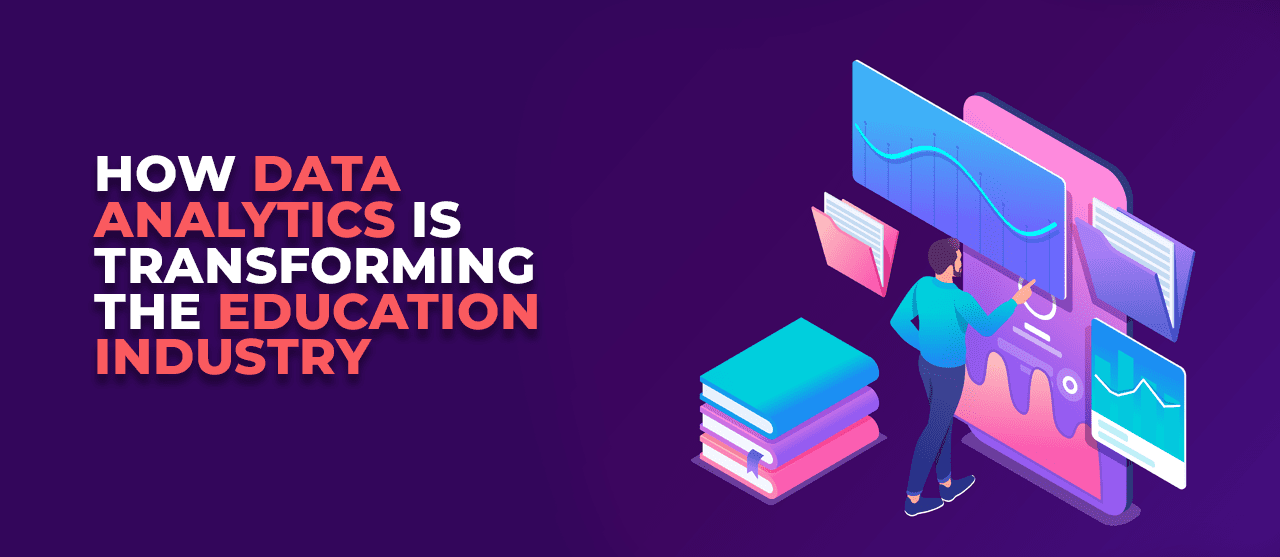
In today’s result-centric world, the educational industry is one of the toughest sectors to succeed in, with institutions vying to attain success, gain top rankings, and maintain them for future prospects. Gone are the days when institutions could rely on manual processes and traditional ways of running the business.
Today, data analytics is playing a critical role in helping institutions provide the best learning experiences to their students and augment enrollments. While data analytics can improve the growth of institutions by identifying lag areas and enhancing quality, predictive analytics can help cultivate newer opportunities and detect current and future risks. Let’s understand more.
Scope Of Data Analytics In The Educational Industry
Educational institutions have access to a wealth of information about students, including their academic strengths, weaknesses, learning speeds, memory, assimilation skills, and retention and recall abilities. They also have data about students’ behavior, exam results, individual student development, and their needs based on changing educational requirements.
All such data can be processed through statistical analysis to derive actionable insights. Armed with such data and insights, teachers can take a very personalized approach to engage with the students and help them improve their performance.
A robust data analytics program can put to use all information in a strategic way for the best results. It’s critical to record and analyze data sets that include:
- Student Data containing demographics like age, ethnicity, and gender are of paramount importance.
- Course Data including enrollment headcounts, grades, and completion rates according to program schedules or sections.
- Instructor Data demographics like age, ethnicity and gender, salary information, and productivity levels.
- Facility Data such as classroom utilization, resource allocation, and count of hours a week they are being utilized.
Role Of Data And Analytics
Educational institutions can use data analytics tools to get insights that can directly influence the learning experiences of students, improve the operational effectiveness of institutions, and inform educators of students’ trends and learning behavior patterns.
Data analytics can help educational institutions –
1. Track Enrollment Trends
Using robust analytics, educational institutions can get access to the right information about potential students and then target communities to maximize enrollments. It makes it easier for the institutions to reach out to more potential student groups with tailored marketing strategies. The outcome is higher enrollment numbers at reduced costs and in less time. Using such tools also allows institutions to expand their course offerings to strategically located campuses.
2. Customize Learning Programs
Most successful educational institutes offer a range of customized programs for individual students. Even when the number of students is extraordinarily high as in schools and colleges, personalized study programs are in great demand. With the help of data analytics tools, these can be offered in the form of “blended learning,” which is a combination of online and offline modes.
Interested students can work and learn at their own pace while following classes and guidance offered by faculty in either of the modes. There are instances when the same course that was earlier offered exclusively as an on-campus course attracted multiple folds of enrollments when offered in this form.
3. Improve Learner Performance
With the help of big data analytics, it is possible to monitor student actions, their learning patterns, and progress. Such analysis can deliver clear insights in terms of time taken by the students to answer a question, sources they use for exam preparation, questions they skip most commonly, and more. All such insights can help teachers establish close monitoring and offer personalized help to improve learner performance and reduce dropout rates.
4. Help Weak And Struggling Students
Students failing in their classes and being placed on academic probation often lead to serious consequences for both educational institutes and students. Data analysis helps identify such weak spots. Setting up alerts on students failing their classes lets teachers adopt a proactive approach to providing the right help instead of letting them fall through the gap.
5. Enhance Learning Outcomes
Data analytics tools can be used to predict students that are likely to become detached and ultimately drop out. These students may have the potential to excel in other areas and need the right guidance to switch to other learning tracks. Teachers can intervene at the right time to analyze academic performance and increase their involvement by motivating them.
6. Teacher Analytics
Decisions made by teachers while modeling courses based on students’ comprehension levels have the greatest outcome on learning experiences. Analytical tools offering suggestions resulting from data-driven processing can help educational institutes offer modules based on students’ learning capabilities, abilities, and preferences. It gives educators and students an edge in understanding and identifying touchpoints of improvements in the learning process.
Summing It Up
Big data analytics is impacting learning experiences across the globe with educational institutes using them to identify potential student groups, access students’ learning graphs, improve learning experiences, and augment career options. It is largely responsible for improving course modules letting students learn at their own pace at different levels.
Analytics information lets educators initiate necessary changes in learning patterns, intervene timely to help students bridge learning gaps, and improve performances. Predictive analytics enable educators to track students’ performance and help them choose the right career courses. The overall result is seen in higher enrollments, better student participation, and successful career choices.
For any data analytics initiative to be successful, the data fed to the analytics tools needs to be of high quality. It needs to be accurate, current, and well-formatted. At EnFuse, we help educational institutions transform their raw data from multiple sources into high-quality data that can deliver meaningful insights. Connect with us to know more.

















Comment